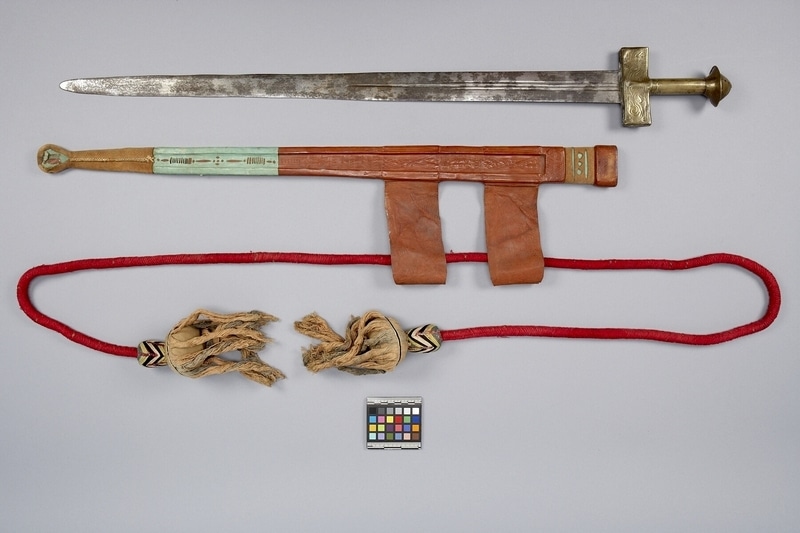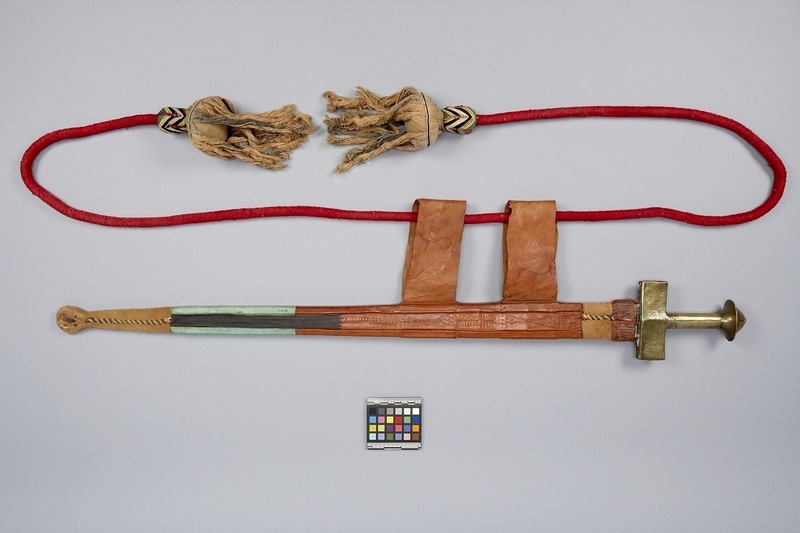Sword Item Number: K2.408 a-b from the MOA: University of British Columbia


Description
A metal sword with a beaten metal blade (part a) which has a fuller that has three ridges, of which the central ridge extends longer than the outer ones. There are two crescent moon shapes near the middle of the blade on each side. Floral decorations beaten on hilt which has a pommel, grip, and cross-guard. The sheath (part b) is sewn and embossed with a geometric pattern cut on sheath leather which is dyed ochre red and pale green. Cotton thread gird with huge tassels in red, green, and yellow.
History Of Use
Takouba swords are common among communities throughout Sahelian Africa. In many communities in the Sahel, these swords were an important tool for traditional dances and ceremonial duels. They would be given to male children after birth by their mothers and used with shields of camel hide. In the modern-day, these swords are still worn as part of traditional regalia at cultural events. The takouba sword design, with its iconic hilt shape, evolved out of Arabian swords that spread into Africa with the spread of Islam. The use of this design by a Nupe artist is likely the result of interaction with Islamic communities in the northern part of Nigeria. The two leather straps on the scabbard are designed to be connected to a belt or baldric for ease of carrying.
Item History
- Made in Nigeria
- Owned by British Museum before August 1960
- Received from British Museum (Exchanger) during August 1960
What
- Name
- Sword
- Identification Number
- K2.408 a-b
- Type of Item
- sword
- Material
- brass metal, steel metal, leather skin and cotton fibre
- Manufacturing Technique
- sewn, embossed, dyed and beaten
- Overall
- height 24.0 cm, width 104.0 cm, depth 4.6 cm
- Part A
- height 11.5 cm, width 100.0 cm, depth 4.6 cm
- Part B
- height 20.8 cm, width 86.0 cm, depth 2.6 cm
Who
- Culture
- Nupe
- Previous Owner
- British Museum
- Received from
- British Museum (Exchanger)
Where
- Holding Institution
- MOA: University of British Columbia
- Made in
- Nigeria
When
- Ownership Date
- before August 1960
- Acquisition Date
- during August 1960
Other
- Item Classes
- metalwork
- Condition
- fair
- Accession Number
- 0022/0016 a